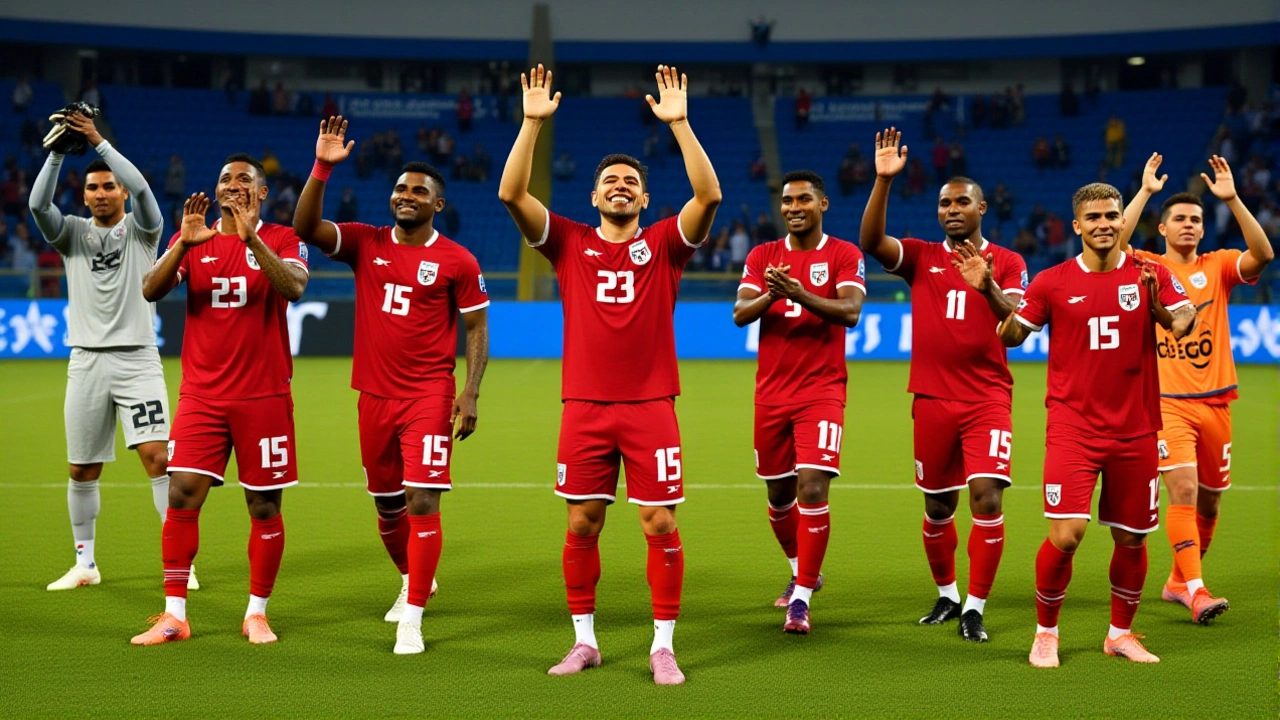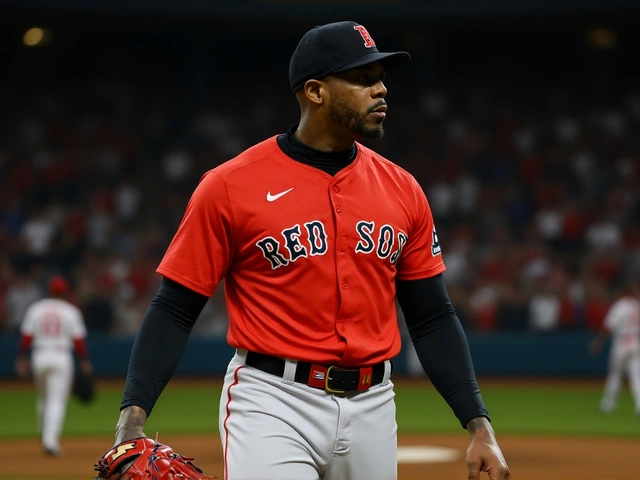
When the final whistle blew at Estadio Rommel Fernández on November 18, 2025, the roar wasn’t just from fans—it was the sound of a nation finally breathing again. Panama had done the impossible: beaten El Salvador 3-0 to clinch direct qualification for the 2026 FIFA World CupUnited States, Canada, and Mexico. No extra time. No penalties. Just three goals, perfect execution, and a historic second World Cup appearance for Panama.
A Nation on the Edge
It wasn’t just a match. It was a referendum on hope. Panama needed to win, yes—but only if Suriname lost to Guatemala. The tension was thick enough to cut. Fans packed the stands hours before kickoff, some wearing jerseys from 2018, others holding handmade signs: “Esta vez, no nos fallen.” This time, don’t fail us. The first goal came in the 17th minute, when César Blackman cut inside from the left, feinted past two defenders, and buried a right-footed shot low into the far corner. The stadium exploded. For a moment, the weight of expectation lifted. But the real drama was still coming.The Penalty That Sealed It
At 45+4, with the first half ending, referee Hector Martinez pointed to the spot after a handball by El Salvador’s Adan Climaco. Éric Davis, Panama’s veteran midfielder, stepped up. No hesitation. No stutter. Just pure technique. The ball kissed the crossbar before nestling into the net. The crowd fell silent for a heartbeat—then erupted like a volcano. It was the kind of moment that defines careers. Davis, 32, had missed a penalty in the 2018 qualifiers. This one? Redemption. “I’ve dreamed of this since I was six,” he told reporters after the match. “This isn’t just for me. It’s for every kid in Colón who kicks a ball with holes in it.”The Exclamation Point
The third goal came in the 85th minute, and it was pure chaos. Substitute José Luis Rodríguez, who’d only come on in the 72nd minute, received a cross from the left. His first touch was poor—El Salvador’s goalkeeper Mario González got a hand on it. But Rodríguez didn’t stop. He chased the rebound like his life depended on it, pouncing with a left-footed tap-in from inches out. The goal was barely legal. It was perfect. CBS Sports Golazo’s broadcast captured the moment: “The fireworks are already going off… as José Luis Rodríguez, the substitute, has booked Panama’s spot at the 2026 World Cup.” And they weren’t wrong. Within seconds, the pitch was swarming. Players collapsed. Coaches hugged strangers. A fan in the stands passed out from joy—then woke up smiling.Why This Matters
Panama finished the final round of Concacaf qualifying with a flawless 3-3-0 record—12 points, +5 goal difference. Suriname, their closest rival, had 9 points. Guatemala, with 8, was out of contention. El Salvador? A dismal 1-0-5. Three points. Nine goals conceded. Their campaign was a ghost. This isn’t just about pride. It’s about opportunity. For Panama, World Cup qualification means funding for youth academies, infrastructure upgrades, and global visibility. It means kids in David and Bocas del Toro now believe they can play on the world’s biggest stage. And it means something deeper: validation. After nearly a decade of near-misses—losing to the U.S. in 2017, collapsing against Trinidad in 2021—this was their moment to prove they belong.
What Comes Next
Head coach Erdan Gomez now has 18 months to build. The squad includes 11 players who also played in Russia 2018, but the new generation—like 20-year-old defender Iván Anderson and 22-year-old midfielder Edgardo Fariña—is ready to lead. The draw for group stage opponents happens in December. Panama will face either a European giant or another CONCACAF powerhouse. They won’t be favorites. But they won’t be pushovers either. The 2026 World Cup, the first ever hosted by three nations, will be a spectacle. With 48 teams and 104 matches, it’s bigger than ever. And Panama? They’ll be there—not as guests, but as contenders.Behind the Scenes
The starting lineup featured Ismael Diaz in midfield, replacing Christian Martinez on the bench—a tactical shift Gomez admitted was “about energy, not ego.” Goalkeeper César Samudio, 28, kept a clean sheet. Omar Browne, on the wing, was a constant threat. And while El Salvador’s Julio Sibrián picked up a late foul in the 91st minute, it was too little, too late. Xinhua News Agency captured the aftermath: fans dancing in the streets of Panama City, flags waving from balconies, buses honking in unison. In the capital’s historic Casco Viejo, a single man played the national anthem on a battered trumpet. No one stopped him. Everyone listened.Frequently Asked Questions
How many times has Panama qualified for the World Cup before?
Panama has qualified for the FIFA World Cup twice in history: first in 2018 in Russia, where they lost all three group stage matches but scored their first-ever World Cup goal against England. Their 2026 qualification marks their second appearance, making them one of the few CONCACAF nations to reach the tournament more than once since 2002.
Why did Panama finish ahead of Suriname despite having the same number of wins?
Tiebreakers in CONCACAF qualifying prioritize goal difference first. Panama finished with a +5 goal difference, while Suriname had +3. Even though both teams had three wins, Panama’s superior defense and offensive efficiency—scoring 11 goals while conceding just 6—gave them the edge. Suriname’s 3-1 loss to Guatemala on the same day sealed their fate.
Who scored Panama’s goals in the decisive match?
César Blackman opened the scoring in the 17th minute with a clinical right-footed strike. Éric Davis converted a penalty in stoppage time of the first half, and substitute José Luis Rodríguez sealed the win with a rebound finish in the 85th minute. All three goals came from different players, highlighting Panama’s balanced attack.
What’s the significance of this win for Central American football?
Panama’s qualification breaks the recent dominance of Mexico and the U.S. in CONCACAF’s top spots. It proves that smaller nations can compete at the highest level with smart coaching and disciplined play. It also raises the profile of Central American football globally, potentially attracting more investment and youth development programs across the region.
Will Panama be in a tough group in 2026?
Absolutely. The 2026 draw will place Panama among teams like Brazil, Spain, or Germany—likely in a group of death. But their experience in 2018 and the confidence from this qualifying campaign means they’ll be dangerous. They’ve already shown they can hold their own against elite teams, and with homegrown talent rising, they could surprise.
How did fans react in Panama after the match?
Celebrations erupted nationwide. In Panama City, streets were flooded with fans singing the national anthem at midnight. Police reported zero arrests despite the crowds. Social media trended #Panama2026 for over 72 hours. One viral video showed a grandmother crying as she hugged her grandson, saying, “I waited 40 years for this. Now I can die happy.”


